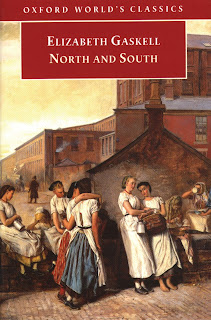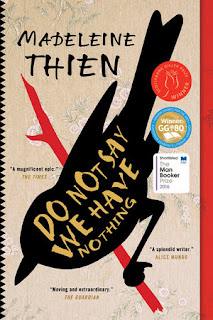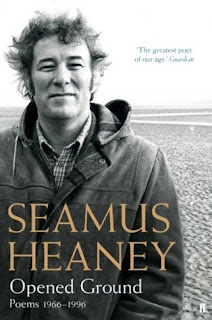Before looking at each of the texts in close-up, here is a quick breakdown of representation:
- 2 novels, 1 short story suite, 1 suite of poetry, 1 play, 1 film.
- 4 female composers, 2 male composers.
- 3 American composers, 1 Australian, 1 English, and 1 New Zealander.
- Breakdown of eras: 1 text from the 1600s, 1 text written in the 1860s-1880s (but published much later), 1 text from the 1910s, 1 text from the 1930s, and 2 texts from the 2000s.
Prose Fiction Options

As I Lay Dying by William Faulkner
What is it: Addie Bundren, mother of five children and wife to Anse Bundren, lies on her deathbed as her family prepares to fulfill her final wish: to be buried in her birthplace of Jefferson, Mississippi. After Addie's death the family begins a long and arduous nine-day trek by wagon to deliver her to her grave. During this journey the children contend with their own crippling poverty, unwanted pregnancy, life-threatening injury, the class-based prejudices of those they meet, and the slowly increasing stench of their mother's corpse as it rots within her coffin in the subtropical heat of the Mississippi summer.
Scope for Study: Faulkner's groundbreaking multi-perspective rural odyssey is a seminal work in the 'Southern Gothic' genre and pioneered the use of stream-of-consciousness within American fiction. As I Lay Dying features no less than fifteen separate first-person perspectives of events, and uses unreliable narration and careful use of omission to deal with subject matter considered taboo at its time of publication (such as abortion, extramarital affairs, and flawed humanity within the church). Students will be able to examine how Faulkner has utilised each of the aforementioned narrative techniques to structure his writing and how he constructs characterisation through the lenses of multiple narrators.
NESA Annotations: Notes for As I Lay Dying can be found in the 2019-2023 Annotations document. These highlight the novel's cultural significance as a groundbreaking work from an author who won the prestigious Pulitzer and Nobel Prizes. Mention is also made of the text's subversion of the 'romantic quest' trope through the use of farce, black humour, irony and tragedy, the use of interior monologue to provide an insight into the psychology of the marginalised, and multiple narration as a means to present conflicting perceptions and invite students "to participate in the novel in the construction of meaning."
Verdict: I'd never read this before now and I absolutely loved it. It's dark and quirky, moving and evocative, and all of the characters are so finely crafted that their voices cut loud and clear through Faulkner's Gothic rendering of the Mississippi. As part of the Literary Mindscapes elective, I think this novel would provide a perfect segue-way into exploring psychological landscapes afforded by sophisticated characterisation and other deliberately-crafted narrative conceits.

Sixty Lights by Gail Jones
What is it: The reader peers into the life of Lucy Strange, a forthright and confident orphan from 19th century Australia with a love for the emerging new technology of photography. Lucy's relatively short life is revealed in sixty vignettes as she first sails to Victorian England to live with her ne'er-do-will uncle and then on to colonial India to meet a potential husband. Lucy's experiences are textured by light and observation, tragedy and innovation, and a relentless desire to capture the ephemeral and fleeting.
Scope for Study: There's so much to unpack in this relatively brief novel. First and foremost is the text's use of the motif of light and the way this metaphorically and literally links into its themes of memory and what the protagonist terms 'the maculate'. Students will also be able to view the text as a representation of an era on the cusp of change, with Lucy presciently remarking, "Everything that is seen... will one day somewhere be registered". Indeed, it is Lucy's obsession with photography that comes to work as sort of synecdoche for the Victorian world - a realm on the borderlands of the past, where the shadows of history open up to this new technology that captures and prompts and reinvents memory.
NESA Annotations: The 2009-2014 Annotation documents includes notes on Sixty Lights from when it was previously prescribed for Advanced English Module B: Critical Study of Text. Mention is made of the novel's use of metaphors and imagery and the cumulative fashion in which it builds an insight into photography and life in the Victorian era. The bildungsroman genre is also highlighted as a point of discussion in regard to its narrative structure.
Verdict: A wonderful and endearingly enigmatic work of literary beauty, Sixty Lights evokes both modernist and post-modernist sensibilities to tell a story at once tragic and uplifting. I think it functions perfectly as an English Extension text in that it's both sophisticated enough to cue intellectual discussion and short enough not to overwhelm Year 12 students who are already overworked. It's also a masterclass in the way that an author can use motif to reinforce and illuminate theme.

Collected Stories by Katherine Mansfield
- Prelude
- Je ne Parle pas Francais
- Bliss
- Pyschology
- The Daughters of the Late Colonel
What is it: In this prescribed collection of short stories, Katherine Mansfield's enigmatic eye is cast over a range of scenarios. 'Prelude' presents a slice of life for a family in New Zealand, conveying the interactions of individuals, the role of women and servants, and the child's view of the world. 'Je ne Parle pas Francais' features a Parisian narrator who recounts a brief friendship with an English man and his almost-wife. In 'Bliss' a seemingly happy middle-class woman becomes increasingly aware of the bisexuality or homosexuality of others in her close circle and confronts (or fails to confront) the implications this has for her own existence and identity. 'Psychology' depicts two writers as they discuss the recent trend of the psychological novel. And finally, 'The Daughters of the Late Colonel' features two sisters in the aftermath of their father's death.
Scope for Study: This would be quite the rabbit hole for students. One key element necessary to understanding this suite would be an introduction to modernism in literature - the idea of a mode of storytelling that can eschew setting, closed-off-explanations, contextualisation, traditional concepts of plotting, the passage of time, etc., will be challenging for many students. An effective way of dealing with this is to undertake guided group reading; asking students what parts of the story the author is allowing the reader to focus on, what this says about the reading/writing process, what subtexts may be at play in this approach, and what might be suggested by particular motifs (EG. The pear tree in 'Bliss', or the interplay of what is said versus what isn't said in 'Psychology').
NESA Annotations: Thankfully there are some notes on this prescribed suite included in the recent 2019-2023 Annotations document. Attention is directed towards Mansfield's innovation as a writer in the 1910s and 1920s, particularly her use of stream-of-consciousness to explore the 'movement' in the minds of her characters, and the way in which she provided a much-needed counterpoint to male-dominated literature at the time. Other identified discussion points include the author's tendency to open her stories in media res, the motif of 'facades and role-playing' across the entire suite, and the use of the epiphany as a stream-of-consciousness device.
Verdict: I think modernism can be one of the most challenging genres of literature for a newcomer to adjust to. With that in mind, the success of this text will depend especially on the teacher's interest and passion regarding Mansfield. I think this particular quintet of stories provides a suitable range of ideas and themes for engagement and, although it would be challenging, I could see this text choice being rewarding if students are open-minded enough. There is a lot to discuss with Mansfield, whether it be her personal context, the reflexivity of the modernist genre, the intellectual construction of her ambiguous stories, or the author's relationship with bowdlerisation in her discussion of taboo topics such as sexuality.
Poetry Options
The Complete Poems by Emily Dickinson
- I felt a Funeral, in my Brain
- This is my letter to the World
- I died for Beauty - but was scarce
- I had been hungry, all the Years
- Because I could not stop for Death
- My Life has stood - a Loaded Gun
- A word dropped careless on a Page
What is it: These seven poems chosen from Dickinson's rather large body of work are difficult to unify via genre or authorial intention (for Dickinson defies such categorisation). We have, however, the elective descriptor from the syllabus as a thesis from which to explore the prescribed text, and upon reading the poetry there are certain themes that emerge in relation to this. This is much existential angst in 'I died for Beauty...', 'I had been hungry...', and 'My Life has stood', and the use of extended metaphor in 'I felt a Funeral...' allows Dickinson to explore the pains and abstractions that pass within the mind. Some of the poetry selected here, such as 'This is my letter...', is among the shortest to be found in all the Prescribed Texts.
Scope for Study: Dickinson is a 19th century poet but, unlike the Romantic poets featured in the Advanced and Extension text lists, she has two key differences - geography and gender. Students will be able to use these differences to explore Dickinson's context, and to build connections to the obsessions evident within Dickinson's poetry; her preoccupations with death and anxiety and the obstacles of the mindscape. The poetry itself, while brief and of relatively accessible structure, deals with deceptively complex ideas that will need repeated reading and discussion. In terms of language and punctuation, Dickinson's ever-present use of the dash can be examined as a representation of the thinking process.
NESA Annotations: Alas, there are no annotations for Dickinson in any of the last three NESA Annotation documents.
Verdict: It's great. There's a lot to look at in Dickinson's poetry and the comparatively short length of each individual poem allows for discrete deconstruction and analysis without overwhelming the students. There should be ample scope for students to use this text to engage with the overall elective as well. I think this would be a very useful suite that would allow students to create connections with the other texts in a larger exploration of mortality, obsession, mental illness, and more.
Drama Options

Hamlet by William Shakespeare
What is it: Hamlet is the mopey son of the recently deceased Danish king. He is upset that his uncle, Claudius, has married his mother and usurped his father's place in both his family and the kingdom of Denmark. One chilly night, Hamlet investigates reports of a strange apparition on the castle's ramparts, and meets the ghost of his father. This ghost tells him that he was actually murdered by Claudius, setting into motion a series of events that will lead to a lot more moping from Hamlet and untold tragedy for the royal family and Denmark.
Scope for Study: Where do I start? Hamlet represents a major turning point in both Shakespeare's oeuvre and the wider trajectory of modern literature, presenting the inner life of a character in a way that no other text had ever done before. Hamlet's soliloquies (and, really, the entire play) convey a landscape of the mind - a literal literary mindscape, if such a thing can exist. From the protracted and extensive use of the obscure rhetorical device hendiadys, to the use of three distinct foils to refract and reflect the protagonist in subtly different ways, Shakespeare's Hamlet is a masterclass in textual integrity: a single-minded representation of the state of being human.
NESA Annotations: There are no annotations for Hamlet found in the last three Annotations documents.
Verdict: I reckon you'd be crazy to pass up an opportunity to teach Hamlet - arguably one of the greatest texts (if not THE greatest) composed in the English language. Doing Hamlet with an Advanced English class was one of the most rewarding and intellectually joyful experiences in my teaching career. Relegating it to the Extension syllabus is almost a crime, but I can imagine there would at least be some fantastic discussions with the smaller, more concentrated cohorts typical of the English Extension course.
Film Options

Lost in Translation, directed by Sofia Coppola
What is it: Bob, an American film star in his waning years, comes to Japan to film a
whiskey commercial. While there he observes a culture of disconnection
and, as he struggles with his own insomnia and boredom, he strikes up a
friendship with Charlotte, a disillusioned young college graduate. The
two connect over their shared discontent in life and their relationship
begins to develop into something deeper, like two drifting entities that
have fleetingly found one another in a strange and alien landscape.
Scope for Study: Coppola's work as a filmmaker is characterised by a lot of silence, a motif that students will be able to examine in connection to the perspectives and themes offered by the film. Other elements to examine include the theme of communication and the ways in which characters do (or don't) connect, Coppola's decision to film in an analog format (rather than a digital one) to create a minimalist colour palette, and the co-opting of the 'male gaze' by a young female director to explore gender and identity. There's a lot of material floating around online in the film criticism blogosphere that covers a wide range of perspectives on the film, many of which will be useful to both the students and the teacher.
NESA Annotations: Lost in Translation can be found in the 2009-2014 Annotations document from when the text was part of English Extension 1 Module B: Texts and Ways of Thinking. Mention is made of connections between the narrative and themes of companionship, loneliness, consumerism, and cultural differences. Owing to the framing of the text within the 'Navigating the Global' Elective, the annotations hone in on Tokyo's cultural and technological differences and the efforts made by the filmmaker to highlight 'cultural dislocation' and alienation.
Verdict: It seems kind of odd that a young female auteur like Sofia Coppola would choose to position her audience from the perspective of the older male character rather than the aloof young female object of his affections. It's a film that's perhaps very much of its time and now in the process of dating quite quickly. I suspect that Lost in Translation won't soon appear again on a Prescriptions List; it actually attracted quite a negative reception in Japan due to the way in which Japanese society was represented. It's a pretty film with an impressive body of paratext but, despite how nice it looks, I'm sure there's other films that would work much more effectively as part of the Literary Mindscapes Elective.




































